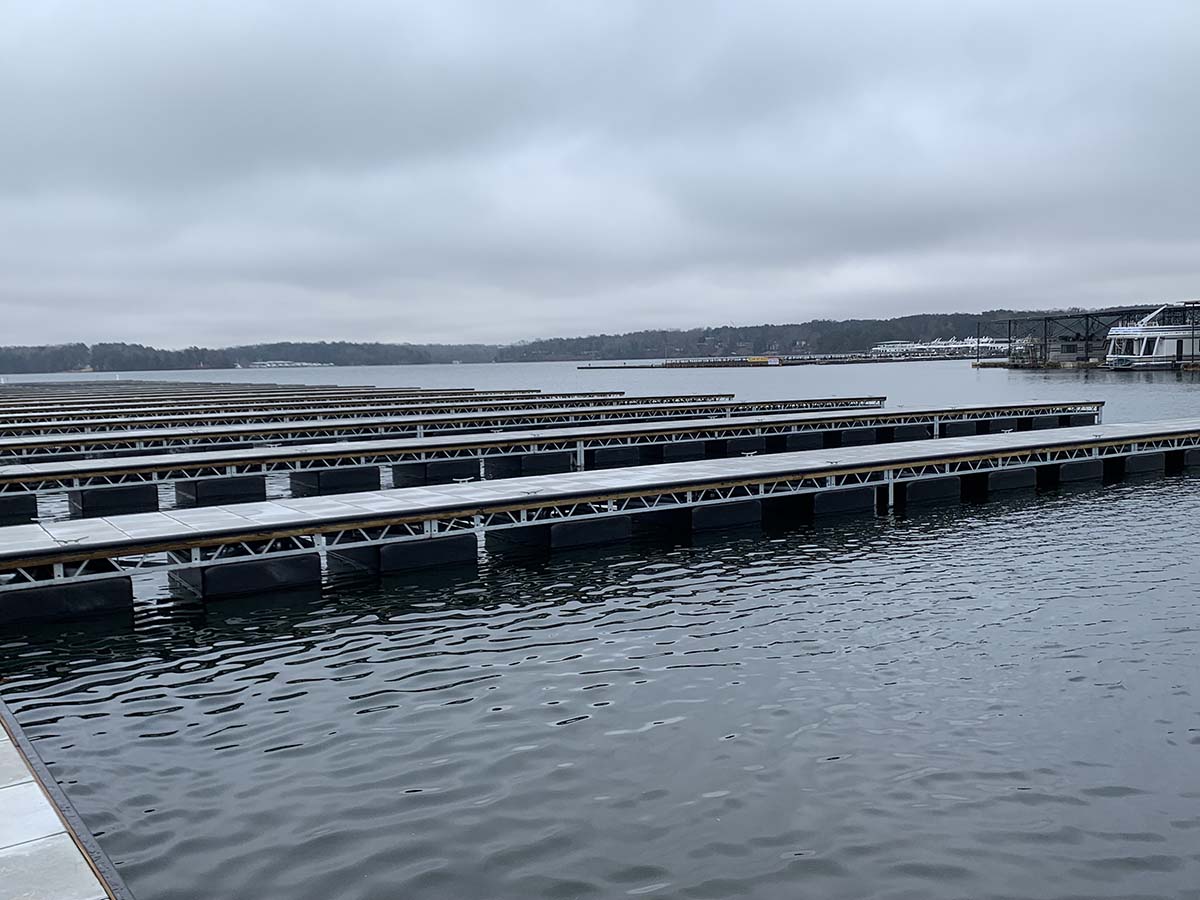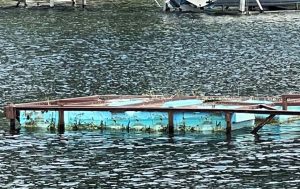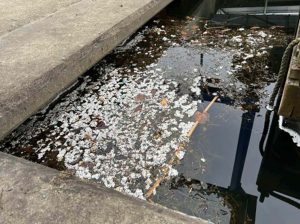
Unencapsulated Floats – Marinas’ Buoyant Offenders
Published on May 27, 2025Floats determine whether a marina sinks or swims, quite literally. Otherwise known as dock floats, float drums, buoyancy billets or flotation chambers, “floats” are essential in keeping marina infrastructure such as docks and buildings buoyant.
Floats made from expanded polystyrene (EPS) foam are typically composed of thousands of tiny, compressed polystyrene beads — approximately 3 millimeters each in diameter. The composition of EPS makes it buoyant, lightweight and rigid, which is why it is considered a great material for dock flotation. These types of floats have the ability to rise and fall with changing water levels while providing stability for boat docking.
Encapsulated Floats
Best practices suggest that these floats should be fully encapsulated. This is done by purchasing floats that are encased in hard, high-density polyethylene (HDPE) plastic or resin shells that look like black rectangular boxes. The shells are molded as one piece, which eliminates any seams or points of leakage. They are also modular in nature, meaning they are easily mountable to dock framework as individual units and can be readily repositioned or replaced without compromising the overall flotation of the dock.

Encapsulated floats come in a variety of shapes and sizes to support the infrastructure at hand and can be “beefed up” in places of extra weight such as beneath buildings, fueling stations or gangways. These situations call for the expertise of a licensed architect or structural engineer who will calculate the size and number of floats based on the structural loading requirements.
The benefit of utilizing encapsulated floats is their resiliency and longevity. HDPE is known for its durability, resistance to impact and to ultraviolet (UV) rays and chemicals such as gases or oils — all common to marine environments. This means they are largely impervious to pollutants coming in or going out, which preserves the integrity of the EPS foam inside as well as safeguards the surrounding aquatic environment from any foam contaminants, should that EPS break down and shed its polystyrene beads.
Additionally, most encapsulated floats on the market today are accompanied by some type of warranty and meet standards of quality set forth by the U.S. Army Corps of Engineers. This ensures that marinas adopting encapsulated floats are making a reliable, long-term investment in their flotation needs while also being responsible guardians of the environment.
Unencapsulated Floats
Unencapsulated floats, on the other hand, lack a protective exterior altogether. These floats are essentially EPS in raw form — foam that spans the entire length and width of the dock and sits within the framework as one singular piece. While still buoyant and initially less expensive, unencapsulated floats pose a number of long-term concerns.

The first concern is the composition of the EPS material itself. Styrene, the chemical building block of polystyrene, is derived from petroleum and classified by the U.S. Department of Health and Human Services’ National Toxicology Program as carcinogenic. Environmentally, EPS is considered a non-biodegradable plastic that can persist for hundreds of years. As EPS foam ages or is damaged, it crumbles and breaks apart, leaving a trail of 3-millimeter-sized beads in its wake. These pose a huge threat to aquatic mammals, fish, birds and invertebrates that may ingest the beads as food. This can harm digestive and reproductive systems, disrupt the greater food chain and adversely impact otherwise healthy aquatic ecosystems. EPS is known to break down in size to the microplastic level, which can contaminate soil, water and the life within, humans included.
Secondly, unencapsulated EPS is very absorbent and has the propensity to soak up fuel, oils, sewage or other nearby contaminants. Every toxin absorbed is potentially released again, further degrading the surrounding environment or is retained where it festers over time and creates a visually unappealing, highly flammable sludge.
Additionally, UV rays, waves, and weather impacts cause unencapsulated floats to break down quickly and absorb even more contaminants and water, which renders them less buoyant. Marinas that utilize unencapsulated floats must regularly inspect the floats for damage, waterlogging, and decomposition and make necessary repairs as soon as possible.
Laws and Moratoriums
Due to the concerns with unencapsulated floats, many state regulators, municipalities, conservation organizations, park services, Army Corps of Engineers districts and local municipalities have begun introducing moratoriums on their use. These moratoriums might include absolute bans, deadlines to remove or replace unencapsulated flotation materials or requirements for the thickness and type of encapsulating materials. Some moratoriums also require marinas to develop replacement plans and show progress reports toward full replacement by a predefined date.
Unfortunately, unencapsulated floats are not simple to swap out. Since the floats tend to be singular pieces, it’s nearly impossible to replace them without removing the dock infrastructure entirely — at which point, a marina might just as well replace with the encapsulated option. For many marinas, replacement is entirely cost-prohibitive. Fortunately, more and more local programs are being developed to help marinas with financial hardship secure funding for dock and float replacements.
In Conclusion
As marinas attempt to balance functionality with environmental responsibility, the shift from unencapsulated to encapsulated floats marks a significant step forward. Encapsulated floats, with their robust HDPE shells, offer superior durability and environmental protection, making them the preferred choice for modern marina infrastructure. These floats not only ensure the longevity of docks and buildings but also safeguard aquatic ecosystems from harmful pollutants.
The transition to encapsulated floats is driven by growing awareness of the environmental and health risks associated with unencapsulated EPS. Regulatory bodies and conservation organizations are increasingly advocating for encapsulated solutions to mitigate these risks. By adopting encapsulated floats, marinas can align with best practices, comply with evolving regulations and contribute to a cleaner, safer and more sustainable future for our waterways. This shift represents a proactive approach to preserving our marine environments while maintaining the essential buoyancy of marina infrastructure.
| Categories | |
| Tags |





